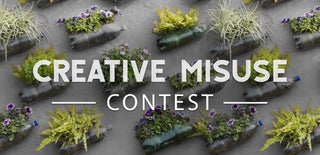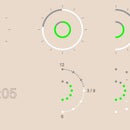Introduction: Drill Guide As Copy Stand
I modified inexpensive drill guide ($20 from Harbor Freight Tool) to serve as copy stand for digital film scanning. I can use it for general macro photography as well.
Step 1: Modification
This modification is fully reversible.
- I removed rubber caps from guide bars.
- I took the head out of the guide.
- I turned head upside down and put it back on the guide.
Step 2: Making the Arm With Camera Holders
The arm to handle a digital camera I made out of 20mm thick board, camera holders, and pad out of 6mm plywood.
Step 3: Assembling the Arm
Here you can see the arm with holders. Two holders needed to provide different orientations of the digital camera. Holders attached to the arm by wooden screws. Assembled arm as well as pad I painted with silver acrylic paint and covered with polyurethane varnish.
To mount arm on the stand I unscrewed chuck, put an arm + pad, and then screwed chuck back. The arm could be put on the stand with holders up or down depending on camera needs to be higher or lower.
Step 4: Mounting the Camera
if I need to scan 35 mm film I mount a camera (with macro lens) on the holder which is perpendicular to the arm. For 645 film I use parallel holder. To mount, I used screw taken out of tripod ball head.
Now the stand is already usable, but I decided to make some improvement so I can adjust camera vertical position with great precision. For that look at next steps.
Step 5: Making the Bridge With Precision Screw Mechanism
Here you can see screw bridge. The list of components used in building it:
- Turnbuckle
- Bolt with length 4.5 inches. It must match the thread of turnbuckle.
- Washer, which internal size matches the size of the turnbuckle end.
- Three metal corners.
- Two crew collars
- Some half-inch plywood.
All components I bought in a local hardware store apart of two screw collars, which I ordered online. The whole price did not exceed $20.
The bridge itself made out of plywood in which I drilled three holes: two for stand bars and one for the turnbuckle.
Head of bolt I treated on the grinding machine to be able to put it into the chuck.
Turnbuckle has a different type of threads on its ends. One with regular thread direction, I used as a screw mechanism. Opposite end accommodates its native eye. For that eye, I needed a lock-nut to prevent its rotation. Buying the nut with the reverse thread is not that easy, so I made lock-nut out of another turnbuckle (actually, I could cut it out of the same turnbuckle).
Trunkbuckle I installed into the dedicated hole with help of the metal corner. The end of this corner I screwed to the bridge. Regular thread end of the turnbuckle (with washer) I inserted into the bridge central hole. Through the hole in another end, I put an eye which I fixed in turnbuckle with lock nut and another.
Then, on ends of the bridge, I put two corners with holes drilled to match stand bars. Inside spaces between bridge and corners, I inserted screw collars together with some pads which I cut out of corners ends (see picture on the next step).
Step 6: Mounting Bridge
The assembled bridge I mounted on top of stand bars and tied it up with collar screws.
Step 7: Scanning Films Frames
Scanning of films is a separate and complicated topic which is not subject of this instructable.
In a short:
- The stand I usually tie to the table with C-Clamp.
- On the table, I put a led light tracer.
- Tracer I cover with cardboard mask, which has a small opening to light up the film frame.
- On the top of that opening, I put frame folder with the film frame to scan.
- Camera vertical position is adjusted with the help of the screw mechanism. I may fit the whole frame or part of it onto the sensor of the camera.
On the photos above, you can see two setups: for 35 and 645 films. The photos made in daylight, while in reality, I do the job at night, so there will be no any light apart of behind film frame.
Step 8: Film Scanning
And here are results of the process: a digital shot of negative and resulting image (after processing with Adobe Photoshop Element and Colour Perfect plugin).
Step 9: General Macrophotography
An important property of this drill guide is an ability to adjust its angle. That makes it possible to use such a stand for general macro photography.

Participated in the
Creative Misuse Contest













